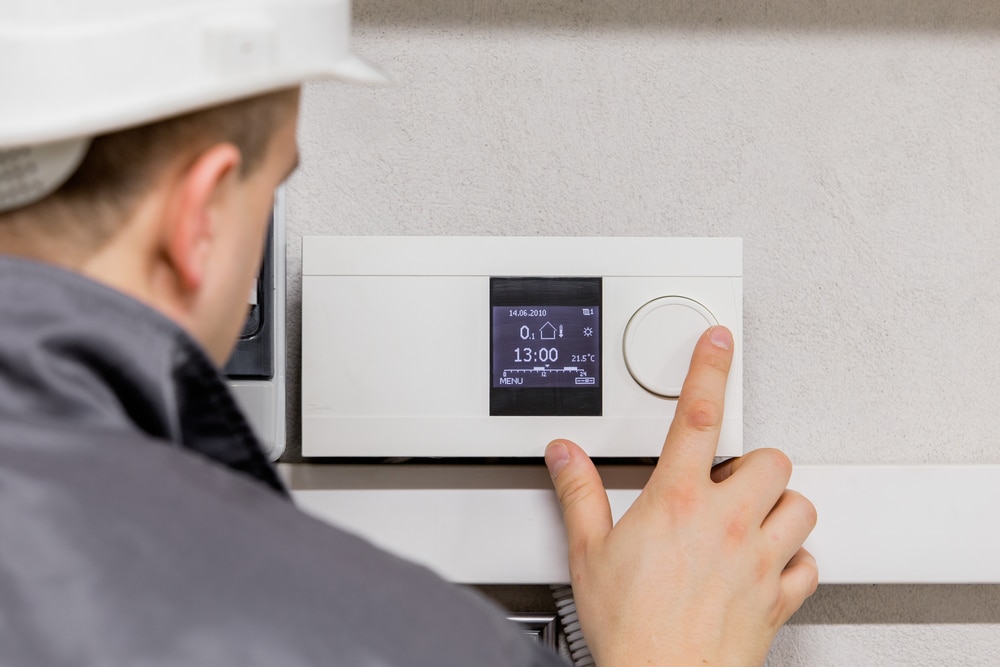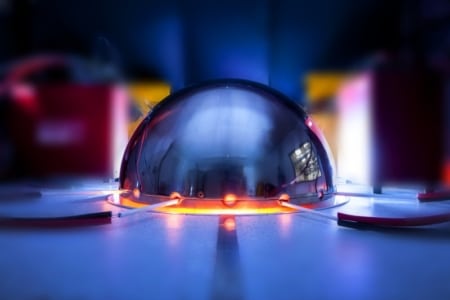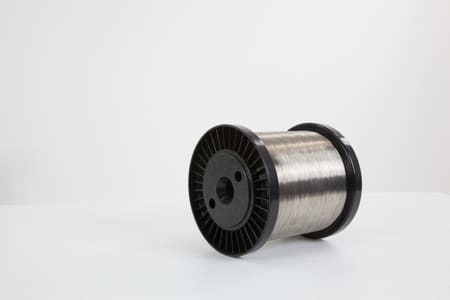The ability to measure temperature has created a mountain of opportunities, which have consequently shaped the world we live in today.
From facilitating the cooking of food to complex engineering and medical science, monitoring temperature lies at the heart of these operations.
So how is temperature measured by a thermocouple?
Thermocouple Wire Types Explained
By Stephen Holt, Technical Manager since 1996

The History of Thermocouple Wires
During the 19th century, Seebeck, Peltier and Thomson (Lord Kelvin) observed and described the effect of a voltage being generated when a circuit of two dissimilar wires was created with the two junctions being placed at different temperatures. They realised the voltage was proportional to the temperature difference and recognised the potential to use this for temperature measurement.
The voltage could be measured by placing a meter in the circuit at the ‘cold’ end – although you do need to know what the temperature of the ‘cold’ junction is independently to obtain your reference point.
Most modern units measure the temperature of the cold junction, where the thermocouple leads from the probe meet the copper wires running to the voltmeter, with a thermistor (or similar).The software then calculates the temperature difference being measured by the probe. This means that the wires from the probe to the meter have to be made from the thermocouple material, as the cold junction is usually physically located in the meter.
What Is a Thermocouple Used For?
Thermocouples are used in many industries to measure process temperatures and in aerospace and automotive applications for aircraft and vehicle engines. They may also be used in domestic applications for the regulation of gas appliances.
Thermocouples can also be used ‘in reverse’. Linking together a number of thermocouple pairs in a chain can generate enough power to run the controls in boilers by placing this chain in the burner flame.
Thermocouples can be used in a variety of applications as they are robust and are able to measure across a wide range of temperatures.
What is a Thermocouple Wire?
A thermocouple wire is a specialised cable made of two different metal wires used in thermocouple probes for temperature sensing.
The two wires that make up the thermocouple pair are made from a range of different alloys and metals and have been standardised by both international and national bodies. Other than for Type N (Nicrosil and Nisil) none of the standards specify the exact composition of the alloys, only the emf (voltage) output they should generate. So, wires from different melters can be quite different in their composition.
Once the melter has created the right composition for the batch they are making they must ensure it is consistent and that the tailings or slag are all removed. This is because the voltage is generated not only at the junctions but also by the temperature gradient along the wire from the hot to the cold end – so every bit of wire must be the same.
Thermocouple Wire Types
The different types of thermocouple wire refer to the combination of metals or alloys used.
Type K Thermocouple Wire
Type K is one of the most popular types of thermocouple. It consists of a positive Nickel/Chromium alloy leg and a negative Nickel/Aluminium leg. It can be used across a wide temperature range (from -200°C to 1250°C), making it suitable for many applications in a variety of industries. It is a much more affordable option than the Platinum based Type R and Type S thermocouples which can be used at higher temperatures.
Type J Thermocouple Wire
Type J is another common type, made from a positive Pure Iron leg, and a negative Constantan (Copper/ Nickel alloy) leg. It has a smaller temperature range than type K – ranging from 0°C to 750°C but the materials in the conductors make it very cost effective. The Iron positive leg makes it very susceptible to moisture, but it is used extensively in indoor, dry applications.
Type T Thermocouple Wire
With a positive Pure Copper leg, and negative Constantan leg, type T can be used in temperatures from -250°C to 350°C. Due to its capabilities in cold conditions, type T may be used to measure temperature in freezers. It is also one of the most accurate thermocouple combinations, making it popular in circumstances where a close control of temperature is required.
Type E Thermocouple Wire
Type E consists of a positive Nickel/Chromium leg and a negative Constantan leg. Type E has a temperature range of -200°C to 900°C, and is particularly sensitive to measuring temperatures as it has the highest voltage output per °C.
Type N Thermocouple Wire
Type N is a relatively new thermocouple combination having been created in the 1960s. It is an improvement on the popular Type K due to its superior repeatability characteristics around 400°C. Type N consists of a positive Nicrosil (Nickel/Chromium/Silicon) leg and a negative Nisil (Nickel/Silicon) leg. The addition of the specific quantities of Silicon reduces the ‘ageing’ effect at 400°C which adversely affects Type K . It can be used at temperatures from -270°C to 1300°C. Type N may be used for measuring engine exhausts, among other applications.
As each of these thermocouple combinations produces a different voltage output per °C (Seebeck Coefficient) it is not possible to exchange one for the other without ensuring the meter is recalibrated and that no part of the circuit contains a thermocouple conductor of another type.
How to Identify Thermocouple Cables: Wire Colours
When insulating the thermocouple conductors to make cables there are a number of International and National standards for the colour coding, which are all different. These can be used to identifty the type of thermocouple wire.
For example, Type K to the American Standards has a yellow jacket with a positive leg in yellow and a negative leg in red, however, the IEC 584 standard colours are a green jacket with a green positive leg and a white negative leg. European standards have adopted the IEC 584 colours to simplify the situation.
Have a question about thermocouple wire or need help identifying which type you need? Get in touch today to find out how Scott Precision Wire can help.


